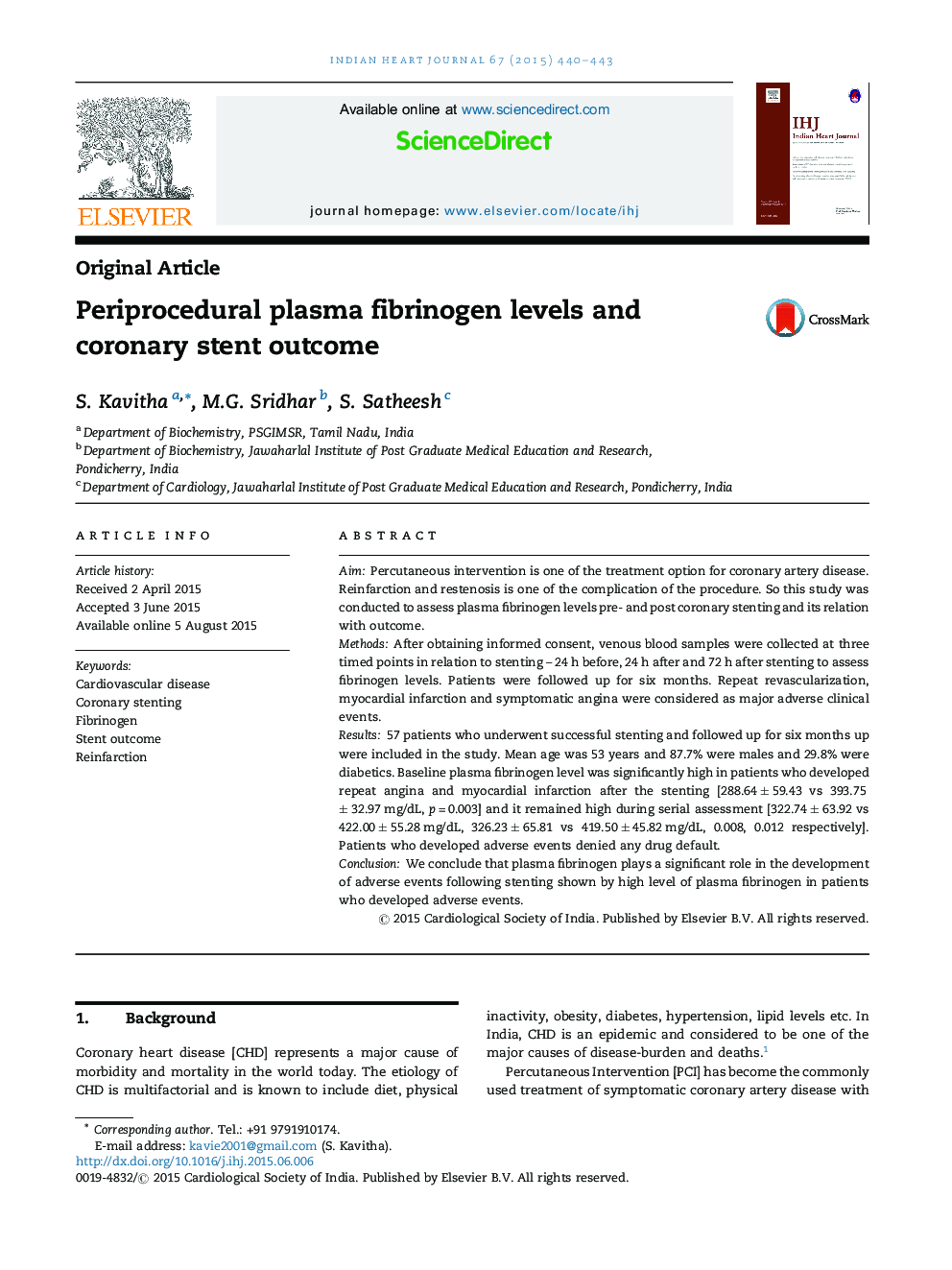| Article ID | Journal | Published Year | Pages | File Type |
|---|---|---|---|---|
| 2927487 | Indian Heart Journal | 2015 | 4 Pages |
AimPercutaneous intervention is one of the treatment option for coronary artery disease. Reinfarction and restenosis is one of the complication of the procedure. So this study was conducted to assess plasma fibrinogen levels pre- and post coronary stenting and its relation with outcome.MethodsAfter obtaining informed consent, venous blood samples were collected at three timed points in relation to stenting – 24 h before, 24 h after and 72 h after stenting to assess fibrinogen levels. Patients were followed up for six months. Repeat revascularization, myocardial infarction and symptomatic angina were considered as major adverse clinical events.Results57 patients who underwent successful stenting and followed up for six months up were included in the study. Mean age was 53 years and 87.7% were males and 29.8% were diabetics. Baseline plasma fibrinogen level was significantly high in patients who developed repeat angina and myocardial infarction after the stenting [288.64 ± 59.43 vs 393.75 ± 32.97 mg/dL, p = 0.003] and it remained high during serial assessment [322.74 ± 63.92 vs 422.00 ± 55.28 mg/dL, 326.23 ± 65.81 vs 419.50 ± 45.82 mg/dL, 0.008, 0.012 respectively]. Patients who developed adverse events denied any drug default.ConclusionWe conclude that plasma fibrinogen plays a significant role in the development of adverse events following stenting shown by high level of plasma fibrinogen in patients who developed adverse events.
